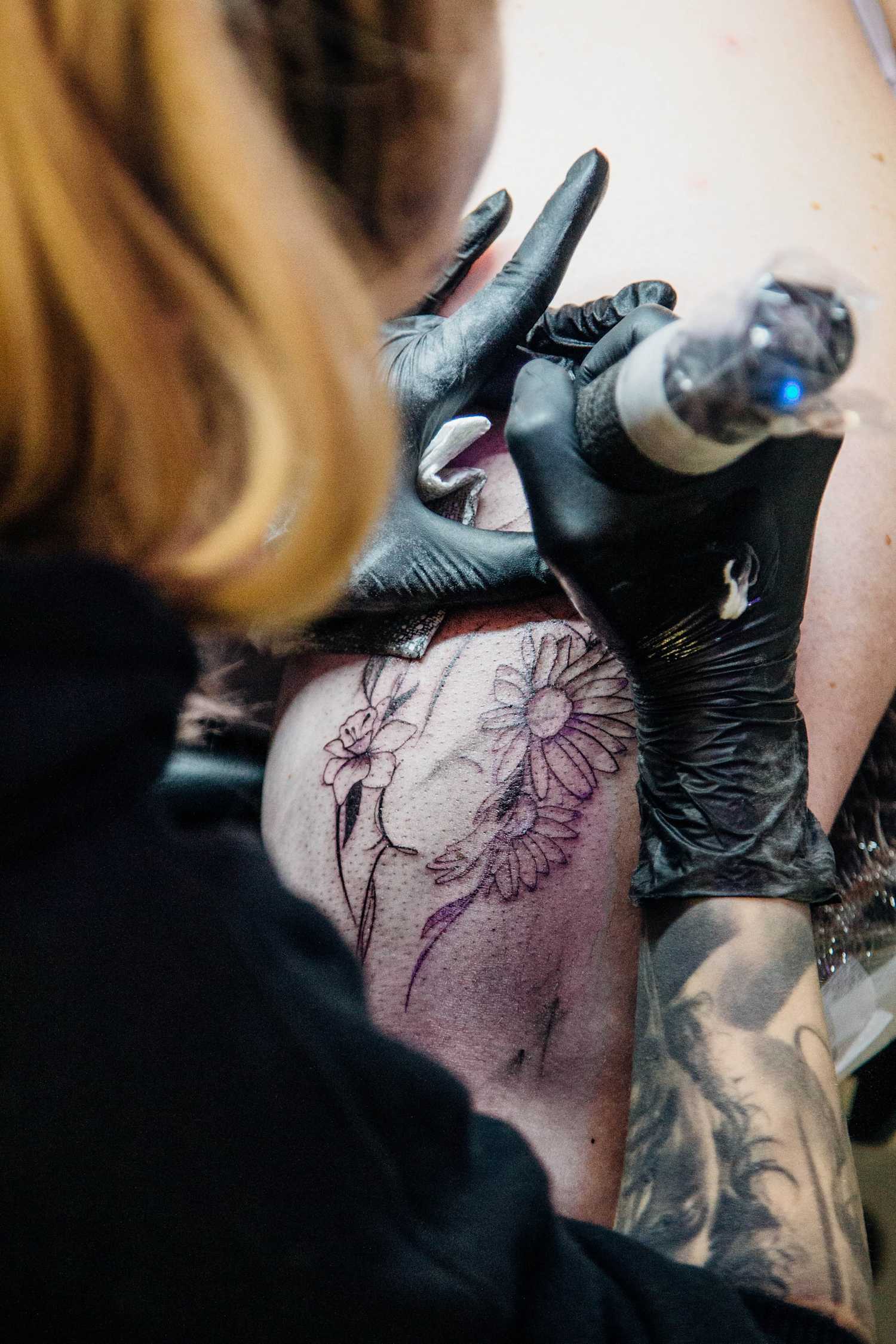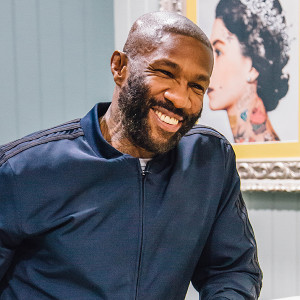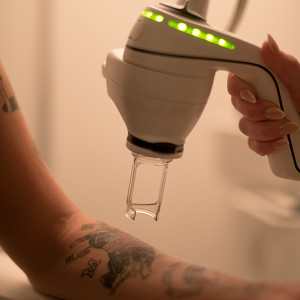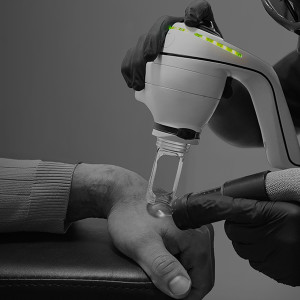An interview with Professor Viren Swami
At NAAMA we spend our time surrounded by tattoo culture. The people who work here have ink; the walls of our Central London studio are emblazoned with images of body art. From our clients we hear all about tattoo trends and get to know the most common tattoo designs: it’s safe to say we consider ourselves experts.
But one thing that we are yet to fully comprehend - that is still up for grabs as the LightSense™ laser offers faster and safer clearance - is how the language around tattooing is changing.
What was thought of as a permanent way of marking yourself with art, allegiances, and affinities, has taken on new meaning as it has become possible to safely remove a tattoo in months and not years.
We speak to Professor Viren Swami, an expert on body image who has written extensively on the topic of tattoos, about how the meaning of getting a tattoo has changed as a result of new technology, new attitudes to gender, and the pandemic.
Read on for insights into how the latest tattoo trends are influenced by the politics of the world in which we live, and how a new generation might be ready to embrace tattoos as ephemeral.
Publish Date in article
"We should also consider the societal understanding of the imagery [...] a skull is often perceived as more transgressive than getting a flower."


NAAMA: Tattoos can mark a person out as a member of a group, for better or worse, but also speak to our need to express our individuality. Would you talk a little bit about this tension?
Tattooing as a marker of group identity is an old idea. Sociologists used to talk about it as a way of identifying “outgroup” identity - outgroup identities mean people who would be typically marginalised or excluded from mainstream society.
Historically, for example, prisoners would have been considered an outgroup. They would have marked themselves to show that they've had a particular experience. Even before that, if you go back to the 19th Century, there's a very interesting distinction between upper-class individuals who got tattooed and lower-class individuals who got tattooed.
Again, the distinction there was about showing your identity as part of the community. So, for upper-class individuals in particular, getting tattooed was essentially a means to impress other people and to show your worldliness: ‘I have travelled widely’ or ‘I’m knowledgeable about different cultures.’ Whereas for working-class individuals, it was about expressing their identity and saying, ‘I'm part of a community of individuals who share an identity.’
NAAMA: I understand that this focus on group identification has changed in recent decades.
Since the 1990s, at least since the mainstreaming of tattooing, there has been an argument that group identity no longer serves as a primary function for getting tattooed. You still see it on occasion - a good example might be Army Cadets. They may get the same tattoo as a way of marking their identity as common with one another.
The argument now is that people are increasingly getting tattooed to express individuality. To show that their bodies are individual and to show that they have agency over their bodies. That's not to say that both functions can't operate at the same time. You might get a marker of identity, which both acts as a group expression, and as an individual expression.
There is a lot of sociological work at the moment showing how some groups of individuals, say from the same social class, will get tattooed in similar ways yet still use tattoos as individual identifiers. So the idea is that you're getting a tattoo to mark yourself out as part of the community, but still, within that framework, showing some expression of individuality.
NAAMA: Would you agree that tattoos have become mainstream? Or do we think that because we’re surrounded by tattoo culture and so it seems more prevalent to us than it actually is?
I think you're right that tattoos have become so popular that they're essentially mainstream now.
Scholars in the US, for example, have talked about how children growing up today are growing up in a world where tattoos are so common that they would seem completely acceptable in most settings.
But if you look at the prevalence estimates of tattooing in Western Europe and North America, only between about 5% and 25% of the population have at least one tattoo, and the majority of that group has only one small tattoo.
So I think there's still a big distinction between people who are getting a tattoo and people who are getting tattooed.
Publish Date in article
NAAMA: Did the pandemic and the opportunity to work from home change how we think about tattoos in the workplace? If we can interview for a job over an online platform then perhaps we needn’t conceal our tattoos.
This is the really interesting thing, I think that pre-pandemic, although tattoos had become mainstream, negative stereotypes about people who were tattooed were still prevalent. So people who have tattoos are typically perceived as higher risk-takers, more likely to be aggressive, and so on. All kinds of negative stereotypes.
And those stereotypical assumptions about people who are tattooed I suspect have their roots in history. They're essentially a way of marginalising people who were outgroups historically. A good example historically is the punk movement, which used tattooing as a marker of rebellion and as an anti-bourgeois signifier. The kind of personality type that you might associate with punk is still associated with tattoos today – they're anti-establishment, they're anti-authoritarian. Even though all the research shows these stereotypes no longer persist.
In occupational settings we see negative stereotypes quite regularly, particularly against women. So when women have tattoos, they're typically perceived as transgressive in terms of gendered roles. The negative line of thinking goes that they're not conforming to their gender and so they're negatively stereotyped.
NAAMA: Are things changing in terms of these negative stereotypes?
I think there are shifts: workplaces are still in flux about the attitudes and relationships to tattooing. One thing we do know is that with a lot of public-facing jobs the expectation is that you hide your tattoos or that you don't have visible tattoos. This is particularly true in customer services, where there may still be barriers to getting tattooed.
So those issues are still prevalent even after the pandemic.
I remember during the first lockdown there was a lot of discussion about this. The argument was that the shift to online working meant people were more likely to get tattooed. I kind of thought at the time that this was a very premature argument, first, because there was no data to back it up, it was all anecdotal.
Secondly, it was more that there was an influx of people getting one, possibly first, small tattoo. They were not suddenly getting a face tattoo out of nowhere. That wasn't happening. So I don't think much has really shifted.
I think maybe, if anything, it made it possible to get a tattoo and still keep working from home because there's less pressure or less stigma than with face-to-face work. But if you occupy a public-facing role, I don't think much has changed.
NAAMA: And I suppose what makes it difficult to design workplace guidelines on body art is that every piece is different. The content of a tattoo can vary from a skull to flowers, and they have very different meanings in the workplace.
Yeah, and this is where the psychological sciences have a real problem with trying to understand the distinction between getting a tattoo and the meaning of that tattoo. So a lot of the research in psychology tends to be quantitative. We'll typically measure how many tattoos a person has, or what their coverage on the body is like.
We very rarely try to understand what the content of that coverage is. And that's a huge problem for psychology because the content does matter. Like you said, I think tattoos convey meaning beyond the kind of coverage on the skin. They tell you something about the individual's personality or experiences, but we should also consider the societal understanding of the imagery. Like you say a skull is often perceived as more transgressive than getting a flower.
NAAMA: Is the perception of tattoos as being permanent marks on our skin changing, especially as new technology offers faster, safer, and better results?
I don't think that people's perceptions have caught up with the technology yet. I think laser tattoo removal is a relatively new technology that still hasn’t become mainstream. And again, if you look at qualitative data, one of the reasons why people do choose to get tattooed is because of the permanence. They're choosing a tattoo because it's a permanent marker on the body.
Sociologists and psychologists have described the impact of living in societies that very clearly define the limits of what you can and can't do with your body, particularly if you're a woman. Agency is taken away from the physical self.
Tattooing can be seen as one way of reclaiming that agency. You can say: ‘This is my body, this is my flesh, and I'm going to treat my flesh the way I want to treat it.’ The permanence of the tattoo is important. People are choosing it as a permanent marker on the body to say, ‘I am permanently marking my body because it is mine and I have agency over it.’
I suspect there will be a new generation of people who will get tattooed because they think that it actually isn't forever. They can change their mind later. But I think it’s the next generation that is coming through into tattooing who are seeing the possibilities for change and the possibilities of new technology.
NAAMA: The language around tattoos is changing and what was once thought of as a permanent way of signalling our allegiances or marking ourselves as unique now seems quite different, especially as exciting new technologies enter the market.
Read about the LightSense™ laser, available exclusively at NAAMA, and how it has offered our clients the opportunity to safely and quickly remove tattoos.









